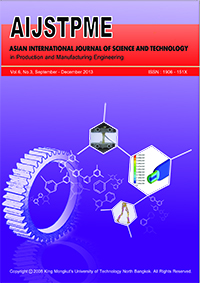A Short Review of 2D-Discrete Dislocation Modeling for Fracture/Fatigue
Main Article Content
Abstract
The discrete dislocation (DD) plasticity is truly mechanism-based plasticity and well-suited for mesoscale modeling in metal. The effects of size-dependent plasticity and plastic dissipation emerge naturally from this framework. The micromechanics of fracture are material dependent and involve a broad range of length and time scales. The intermediate situation between the cleavage crack growth and the plastic dissipation involved in fracture based on DD plasticity is focused here. Fracture crack growth is affected by dislocations: (i) dislocation motion shields the crack tip and increases the dissipation energy and (ii) the local stress concentration associated with discrete dislocation in the vicinity of the crack tip can reach atomic bond strength, causing the crack to grow. In this paper a few problems of fracture, such as fatigue crack growth from small cracked particle into single crystal and the role of plastic anisotropy on crack growth in a single crystal, are reviewed with a focus on the effects of plastic confinement around a crack tip.
Article Details
How to Cite
Olarnrithinun, S. (2013). A Short Review of 2D-Discrete Dislocation Modeling for Fracture/Fatigue. Applied Science and Engineering Progress, 6(3), 45–57. retrieved from https://ph02.tci-thaijo.org/index.php/ijast/article/view/67419
Issue
Section
Technology


